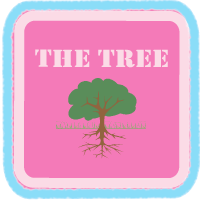 Foreign Language (FL) vs. Second Language (SL) Context
Foreign Language (FL) vs. Second Language (SL) Context
 |
In addition to many other factors, teaching a language greatly depends upon the context in which it is being taught. As a language instructor it is important to understand the difference between teaching contexts, such as Foreign Language (FL) and Second Language (SL) contexts. Once a teacher identifies and understands the context in which they teach, they will be more readily able to improve instruction to meet learner needs and enable student success. |
What are FL and SL? What is the difference between FL and SL?
The terms FL and SL refer to Foreign Language or Second Language environments; these are the two different language learning environments in which a student can learn another language. The defining factor between the two is the language environment outside of the classroom.
In a foreign language situation, the language learner is exposed to the target language outside of the classroom in a variety of settings; for example, students who come to Canada to learn English are learning in a foreign language environment.
Being in a second language environment means that the learner will rarely, if ever, have opportunity for exposure to the target language outside of the classroom; for example a student who is studying German while living in Spain would be studying in a second language environment.
back to top
How do these contexts affect the way I teach?
Second languages can be taught in a number of different contexts. Generally speaking, the more exposure to the language and the greater the frequency of such exposure, the quicker the language will be learned. With that being said, the goal of the language teacher is to provide as many opportunities for students to hear and interact with the TL as possible.
Important Points:
- The rate of learning the target language is greatest in SL programs.
- More repetition and review must be built in to FL programs.
- Grammar is needed in both SL and FL programs.
- In SL environments students both ‘pick up’ or acquire language AND learn it.
- In FL environments students mostly learn language, although they can ‘pick up’ some terms
- FL programs can develop BICS over time.
- SL programs can develop BICS and CALP over time.
Foreign Language (FL) |
Second Language (SL) |
Bilingual Language (BL) |
Immersion Language (IL) |
Student is exposed to the TL in the classroom ONLY for 45-60 minutes five days a week |
Student is exposed to the TL both inside and outside the classroom ALL of the time |
Student is exposed to the TL only in the classroom for 2.5 hours per day five days a week |
student is exposed to the TL in the classroom ONLY for 80-100 per cent of the school day five days a week |
 |
Test your knowledge of language contexts with this quiz. |
back to top
Why are all language programs in Canada labeled as SL?
In Canadian schools, all language programs are labeled as SL programs even though almost of the programs are in fact in FL environments. These programs are labeled this way in response to the Act for the Preservation and Enhancement of Multiculturalism in Canada that was passed in 1985, officially recognizing Canada’s multicultural status. Until this point, languages being spoken in Canada other than English and French (Canada’s two official languages) were considered to be ‘foreign’ languages, just as people who speak those languages were also considered to be ‘foreign’ regardless of their immigration or citizenship status. In support of the act’s intention of allowing all Canadians to know and feel that they too have a place in Canadian society regardless of the language they speak or where they come from, the label on language classes was changed to “Second” instead of “Foreign.” The idea being that with the large multicultural population in Canada, it could be possible to find native speakers of any language being taught in schools in surrounding environment.


